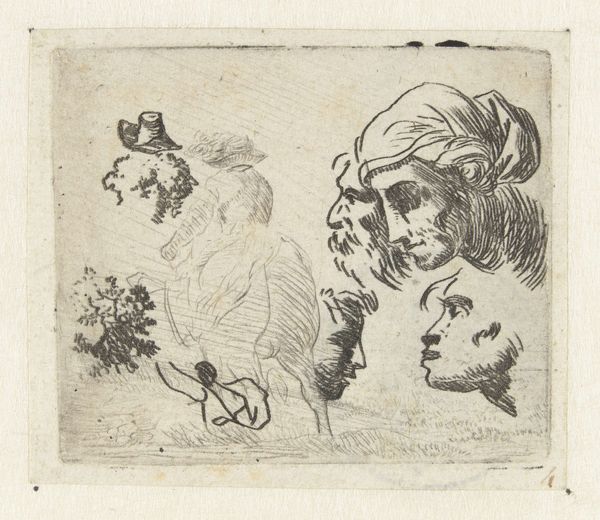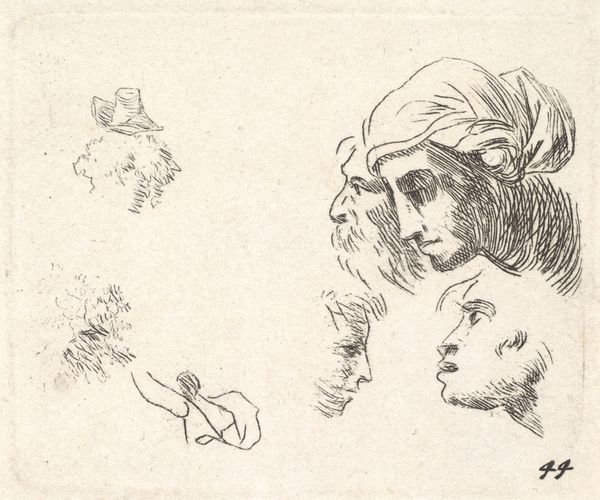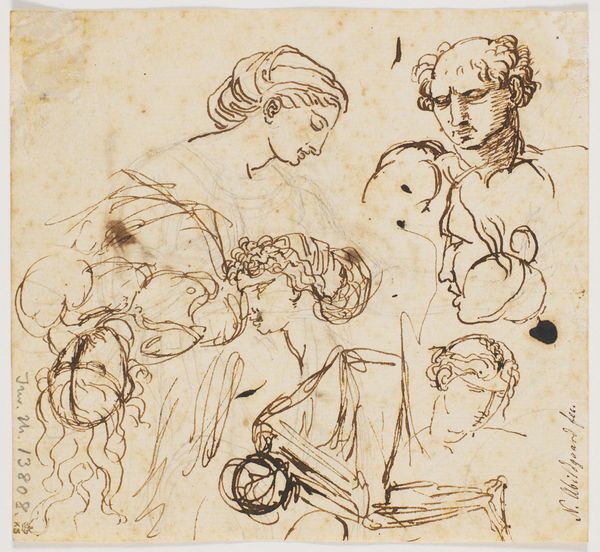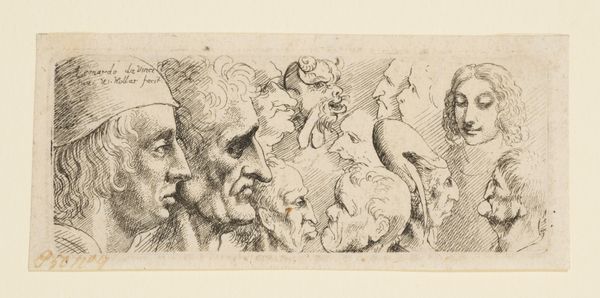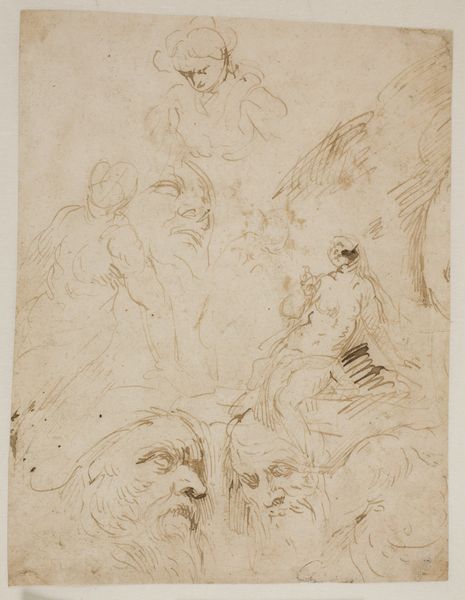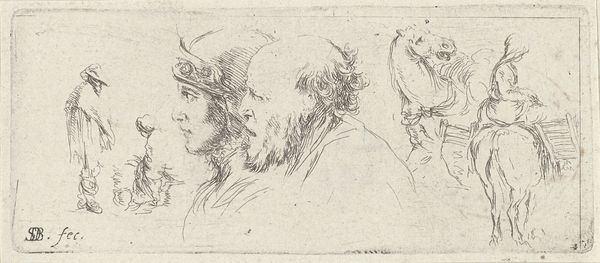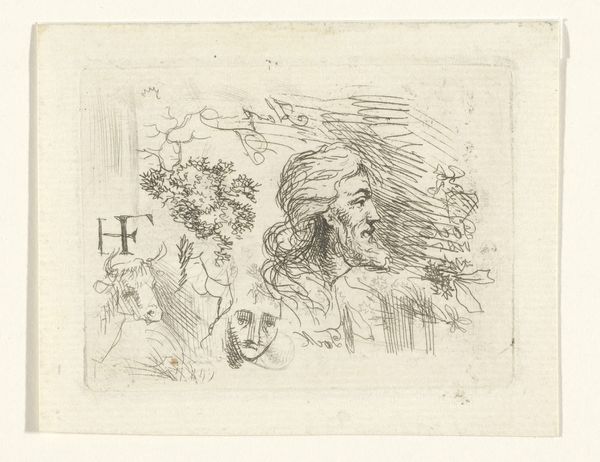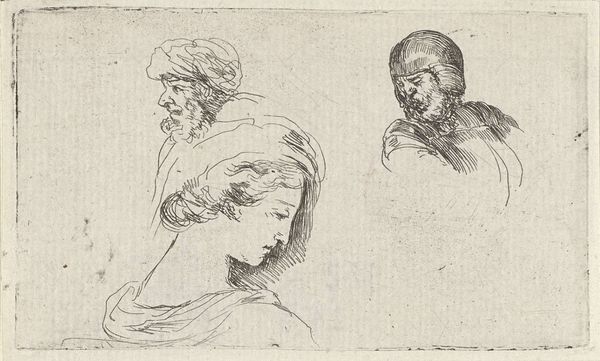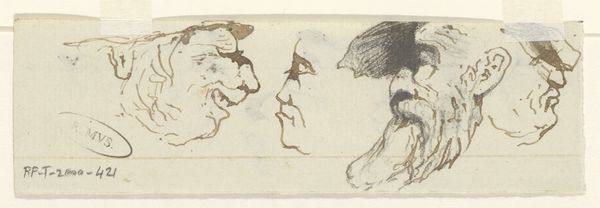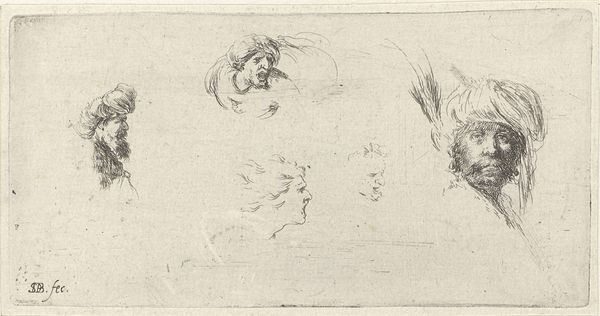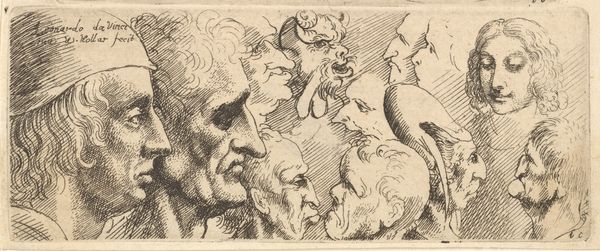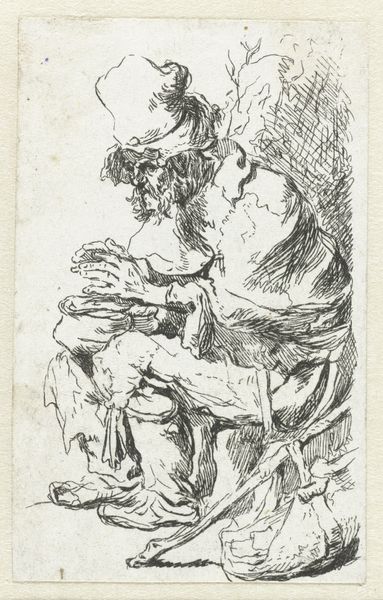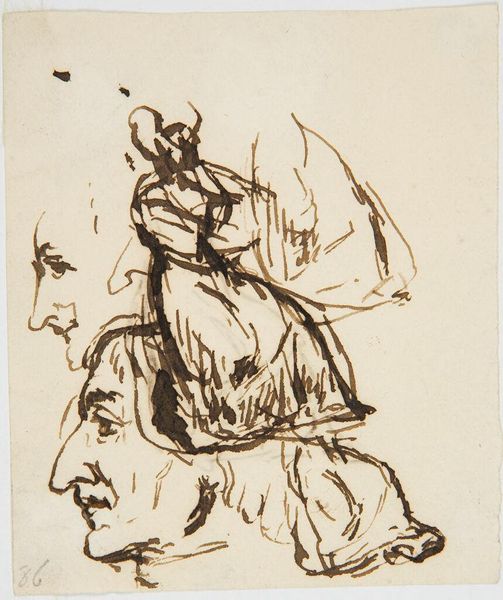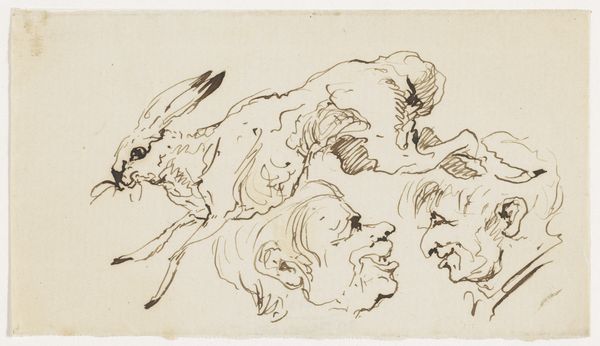
drawing, etching, ink
#
portrait
#
drawing
#
ink drawing
#
baroque
#
etching
#
figuration
#
ink
Dimensions: 50 mm (height) x 59 mm (width) (bladmaal)
Curator: Oh, look at this one. "Studie af hoveder," or "Study of Heads," by Karel Du Jardin, dating from 1626 to 1678. It's an ink drawing, here at the SMK. A quick little etching. Editor: It feels like a whisper, doesn't it? Fleeting. Like a collection of half-formed thoughts escaping onto paper. The strokes are so delicate, almost tentative. Is it Baroque? Curator: Indeed! You can feel the Baroque influence, particularly in the expressiveness and the dynamic composition. See how Du Jardin uses etching to capture a range of textures and tones in these studies of heads. The figures are, indeed, baroque. Editor: But what figures! There is someone on the left I cannot quite make out; they are very small in relation to the head portraits. Are they also baroque figures of fashion? Are we viewing different figures? Curator: These "head studies" capture a variety of ages, and possibly classes. This harkens back to the importance of physiognomy at the time – that your outward appearance revealed inner truths. It shows the baroque preoccupation with capturing human essence. Editor: I guess... Still, they feel more psychological than sociological, perhaps. Like, what does it mean to observe ourselves? What does it mean to portray someone? Are we simply collecting images? Are we simply storing up visual information? Curator: It also plays with the idea of archetypes. Consider the bearded, older figure versus the more youthful, clean-shaven one. He explores the universality of human experience. Even the simple medium - etching - speaks to this democratization of art. These images would've been reproducible and widely accessible. Editor: True, though that slightly haphazard nature of it keeps pulling me in! Almost feels unfinished, open-ended... inviting you to complete it in your own mind. Perhaps it means that the inner, the essential, can never be completed, either in artwork, or life. Curator: Ultimately, this little etching shows the dynamism and humanist interests of the Baroque, distilled into these simple and enduring observations. Editor: I shall consider this artwork another visit and ponder the nature of observation once more!
Comments
No comments
Be the first to comment and join the conversation on the ultimate creative platform.
